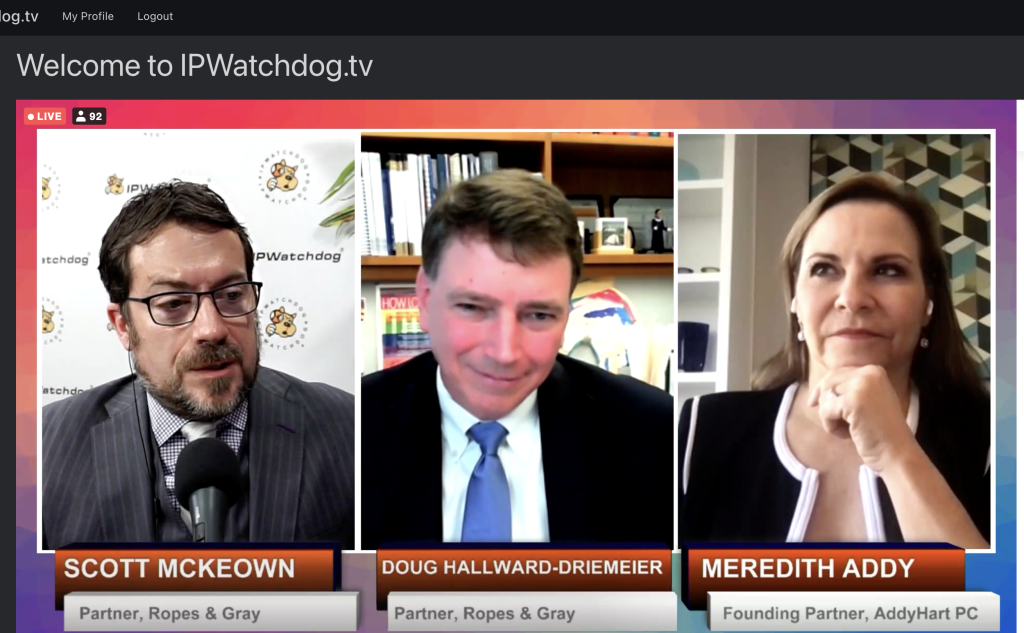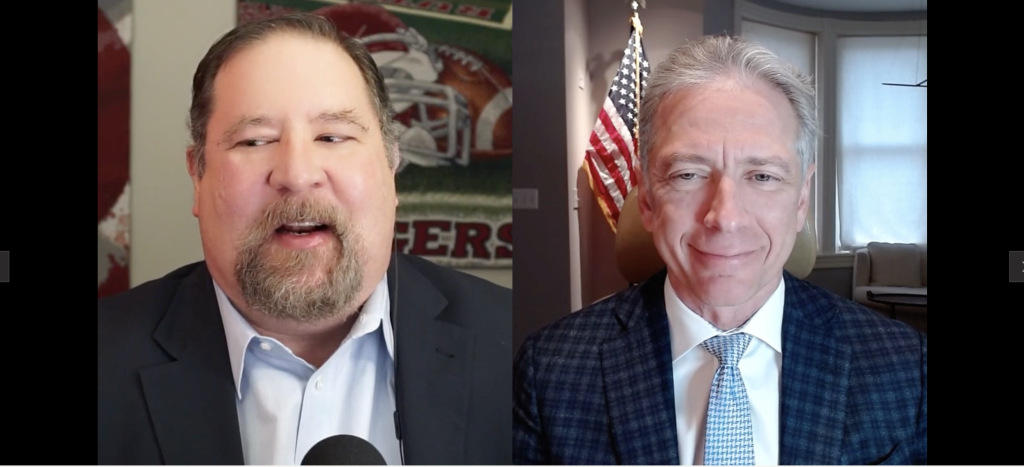“Legislators should be asked, who’s benefiting? Why is it in the national interest to have national resources devoted to repeating the same issues over and over again in the same forum or multiple forums?” – Andrei Iancu
 The third day of IPWatchdog’s PTAB Masters™ 2022 featured more from former U.S. Patent and Trademark Office (USPTO) Director Andrei Iancu, as well as panels covering topics such as avoiding obviousness mistakes, appellate strategies from the Patent Trial and Appeal Board (PTAB) and other intricacies of PTAB practice from the experts.
The third day of IPWatchdog’s PTAB Masters™ 2022 featured more from former U.S. Patent and Trademark Office (USPTO) Director Andrei Iancu, as well as panels covering topics such as avoiding obviousness mistakes, appellate strategies from the Patent Trial and Appeal Board (PTAB) and other intricacies of PTAB practice from the experts.
Panelists this afternoon also weighed in on today’s announcement that Justice Stephen Breyer will retire from the Supreme Court, opening the door for Biden to appoint a replacement.
Doug Hallward-Driemeier, an experienced Supreme Court advocate with Ropes & Gray who was speaking on a panel titled, “Reversing the Result: Motions to Reconsider, Arthrex Director Reviews, Appeals to the Federal Circuit,” said that the patent bar may miss Breyer more than they think. “One of the interesting things about Breyer is he was an administrative law professor,” Hallward-Driemeier said. “He’s one of those on the Court who truly does understand the administrative process…. We do lose a pretty important voice there in terms of somebody who’s had that experience.”
Meredith Addy of AddyHart, one of the sponsors of the PTAB program and a speaker on the same panel, agreed with Hallward-Driemeier and noted that it’s difficult to tell how the candidates being floated as potential nominees would fare on patent issues, since most patent cases aren’t overtly political.
The shortlist of nominees so far includes Judge Ketanji Brown Jackson of the U.S. Court of Appeals for the District of Columbia, who clerked for Breyer; Associate Justice Leondra Kruger of the California Supreme Court; Judge J. Michelle Childs of the U.S. District Court for the District of South Carolina and pending nominee to the U.S. Court of Appeals for the District of Columbia Circuit; among several others.
Hallward-Driemeier added that the change will make the job of Supreme Court advocates that much harder, since each time there is a new Justice, it’s a new Court, and “we will see new alignments.” What that portends for the patent world, if anything, remains to be seen.
With respect to appellate advice, the panelists provided a number of tips for attendees appealing from the PTAB to the Federal Circuit, including in oral argument at the Federal Circuit, “overprepare,” identify and categorize the likely questions by themes, and “read the room and know when to sit down.”
Who Benefits From Multiple Bites at the Apple?
 Earlier in the day, IPWatchdog CEO and Founder Gene Quinn played another clip from his recent interview with former Director Iancu, now of Irell & Manella, in which Iancu challenged policymakers who are considering legislation that would roll back some of the changes Iancu himself put in place to curb PTAB abuses (such as the “Restoring America Invents Act”) to ask themselves how such bills would benefit the nation.
Earlier in the day, IPWatchdog CEO and Founder Gene Quinn played another clip from his recent interview with former Director Iancu, now of Irell & Manella, in which Iancu challenged policymakers who are considering legislation that would roll back some of the changes Iancu himself put in place to curb PTAB abuses (such as the “Restoring America Invents Act”) to ask themselves how such bills would benefit the nation.
If you look at it from a higher-level policy perspective, not from an individual party’s interest, you have to ask yourself, ‘why is there a benefit to the United States for the same issues to be litigated multiple times in multiple venues?’ Legislators should be asked, who’s benefiting? Why is it in the national interest to have national resources devoted to repeating the same issues over and over again in the same forum or multiple forums? To me, that is one of the fundamental problems with [the America Invents Act] that it did not handle from the beginning.
Iancu said that this problem of allowing multiple proceedings on the same patent, and other issues arising from the ambiguity of the AIA, such as the Arthrex ruling, have presented real challenges for USPTO directors before him as well, and will continue to, and that “the Office has done a remarkable job from the beginning trying to navigate these significant complications.” He added:
What I did, and what other PTO Directors have and will try to do, is to navigate that as best as possible to create as much continuity as possible. You want to take out the ups and downs that can come with changing times because ultimately patents need to be reliable over their 20-year term from filing. We want to try to create as much stability as possible given the vicissitudes that were inherent in the statute as written, and I think other Directors will try to do the same. In general, the PTO tries to maintain as much stability as possible, given the statute that was given to us.
The PTAB Masters™ 2022 program will run through Thursday, January 27, and is presented by IPWatchdog®, and co-chaired by Scott McKeown and Gene Quinn. To join us for more on the Patent Trial and Appeal Board from the viewpoint of both the patent owner and petitioners challenging patents, register for free here.

![[IPWatchdog Logo]](https://ipwatchdog.com/wp-content/themes/IPWatchdog%20-%202023/assets/images/temp/logo-small@2x.png)

![[Advertisement]](https://ipwatchdog.com/wp-content/uploads/2024/05/Quartz-IP-May-9-2024-sidebar-700x500-1.jpg)
![[Advertisement]](https://ipwatchdog.com/wp-content/uploads/2024/04/Patent-Litigation-Masters-2024-sidebar-last-chance-700x500-1.jpg)

![[Advertisement]](https://ipwatchdog.com/wp-content/uploads/2021/12/WEBINAR-336-x-280-px.png)
![[Advertisement]](https://ipwatchdog.com/wp-content/uploads/2021/12/2021-Patent-Practice-on-Demand-recorded-Feb-2021-336-x-280.jpg)
![[Advertisement]](https://ipwatchdog.com/wp-content/uploads/2021/12/Ad-4-The-Invent-Patent-System™.png)






Join the Discussion
No comments yet.